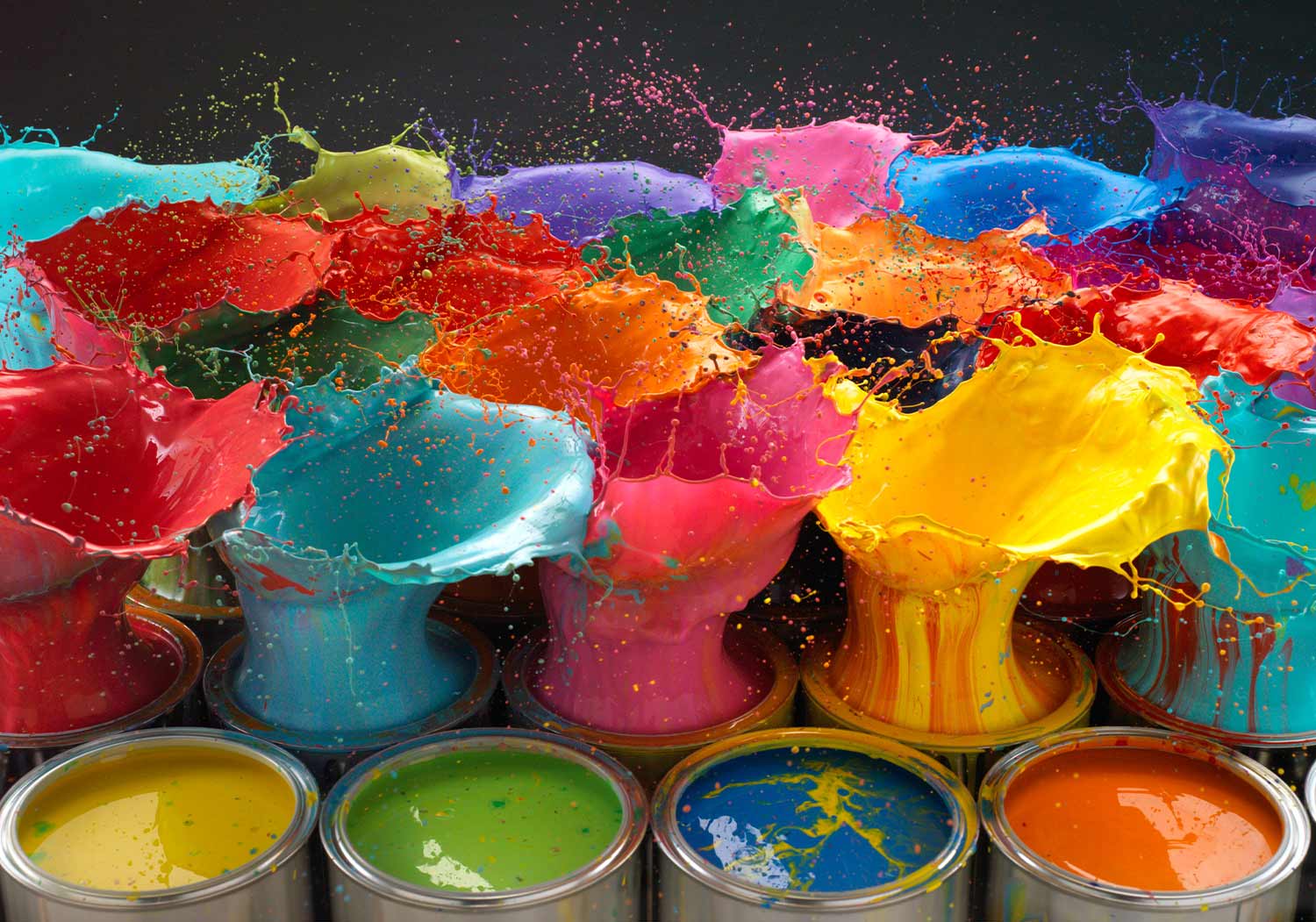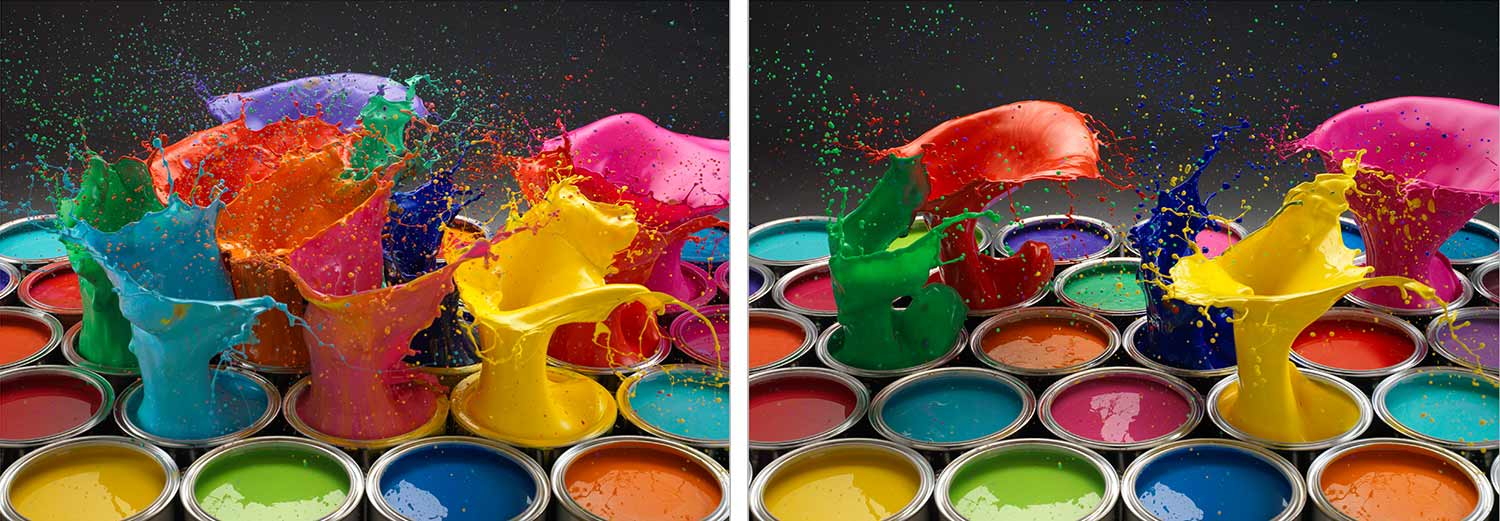Paint Explosion
Freeze liquids in motion and discover exactly how you can capture an image like this one!
This shoot presented numerous mind-boggling complications. However, with the right application of logic and knowledge, professional photographer Karl Taylor shows you precisely how it can be accomplished.
With the help of Tim Gaudion on this project (the man behind many of our wild contraptions and builds!) you’ll see how the team build a one of a kind device to turn Karl’s crazy ideas into reality, proving that anything is possible with a bit of ingenuity, problem-solving, and testing.
Delve into the camera settings, lighting, and the intricate process of manually capturing a paint splash, and learn why manual capture is preferred over trigger devices in this particular case. Also, uncover the secrets to mastering flawless lighting to capture the paint in all its magnificent glory!
In this class:
- Cultivate problem-solving skills – crucial for all photographers!
- Dive into photography with speedlights.
- Discover the perfect camera settings used to freeze motion.
- Gain a comprehensive understanding of fast flash duration.
To see Karl retouch this shot, check out Paint Explosion Review.

If you find yourself captivated by the world of splash photography, don’t miss the opportunity to explore the Sports Product Shoot With Paint Splash and Liquid Fashion.
Questions? Please post them in the comments section below.



Comments
Stunning work.
how did you manage to get the correct timing?
Skill 🙂
This is so cool!!
Great work Karl, why did you decide against using a trigger for this one?
Hi Adrian, I felt the trigger would give only the same result (unless I adjusted the delay time for each shot). On this one I quite fancied the anticipation of the unknown!
Amazing one Karl!!! Just wanted to ask you, since you are using speedlights for the faster flash duration at low power, do you bump up the ISO and open the aperture a bit for such splash shots? Also, can the elinchrom master 600s freeze at lower power and does the distance between the lights and the subject also make a difference ? Thank you Karl.
Hey Karl, can you please reply to my question above? Guess you have missed it. Thanks a ton 🙂
Hi Kartik, I used more speedlites to compensate for the lower power, these days cameras have better high ISOs so that would also be an option. Opening up the aperture will of course let more light in but it will also reduce depth of field. I’m afraid I don’t know the lights you are talking about so I can’t comment on them, you would need to check the spec sheets and look for the t0.1 time spec (not a t0.5) if the time is 1/5000th or faster then they should be good for this sort of shot.
Thanks so much Karl, totally makes sense. Cheers!! Cant wait for more product videos.
Great job Karl! What shutter speed did you use? I wonder how you synchronized the Nissin flash and timing of the spill and shutter? Apart from equipment list it, would be better if you add EXIF data like the camera model, lens, shutter speed, aperture, etc. to all your shoots.
Hi Waris, on a medium format camera you can sync at any speed, if I was using a 35mm camera then I would have been limited to the 1/250th sync speed, but as you would have understood from the video it is the flash that is freezing the subject not the shutter. I was connecting to the flashes with a wireless trigger on the camera and receivers on the flashes. Please check the first 15 chapters on this page to really understand studio lighting, synchronisation and flash duration. https://visualeducation.com/portrait-photography/
Just wonderful so intense love the color Thanks! going to try this with watercolors on people
Which portable flashes were used? They give so short light impulse…
Hi Maksym, there is an equipment list on the video page at the lower right side. Cheers Karl.
This was genius! All of it, from the idea to the DIY solution. Great job.
i just joined your website just in half an hour you changed my mindset that work should be done smartly. its fun to watch broncolor sponsor photographer using pocket flashes back then. i am loving every minute of this.
This video alone is worth the fee. Simply brilliant, you have an incredibly creative mind.
Many compliments from a colleague in Sicily. Do a wonderful job. Compliments
Thank you Dario
Great ideas and superb shots! Karl, can you tell us which kind of paint are you using for these shots? I can just imagine they are water based.
Hi, if the paint is not hitting a person then we use water based emulsion that you paint interior walls with. If it’s hitting a model we use kids paint from nursery schools and water it down.
No pain, no glory!
Amazing work Karl.
Thank you
Hi Karl.
you used scrim sheets at both the sides. Shouldn’t you have used another material instead. scrim sheets would have soaked the paint, had the liquid spilled on them.
Hi Ayen, the scrim sheeting is just paper on a roll and is probably the least expensive thing to replace. The type of lighting the scrim reveals is also best for glossy surfaces so my first objective is for the best lighting and result. I’ve sold the picture for much more than the cost of the scrim paper.
Mindblowing..:)..I am in love with your work..:)
Thank you.